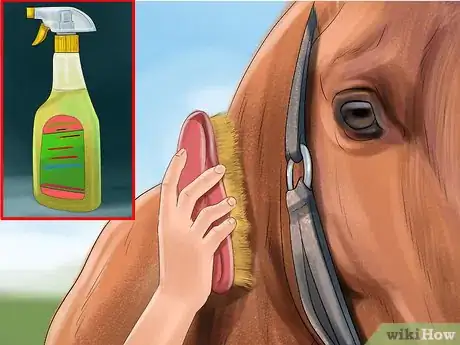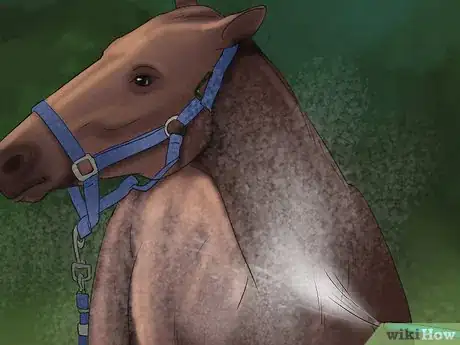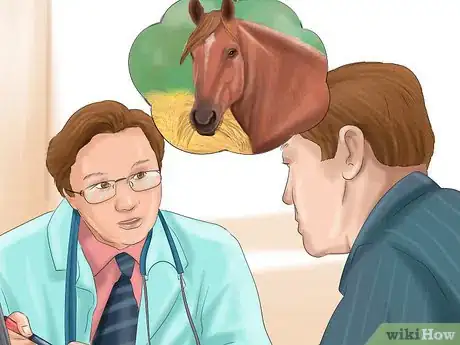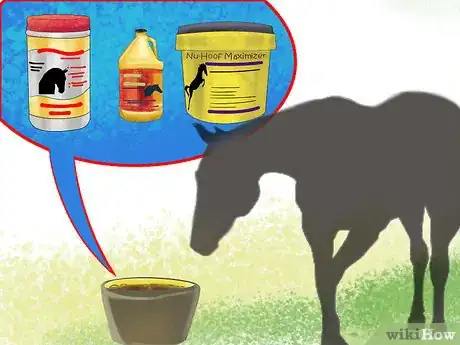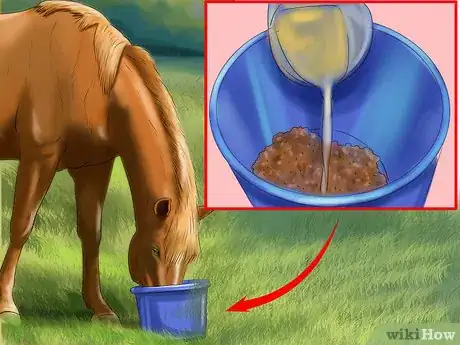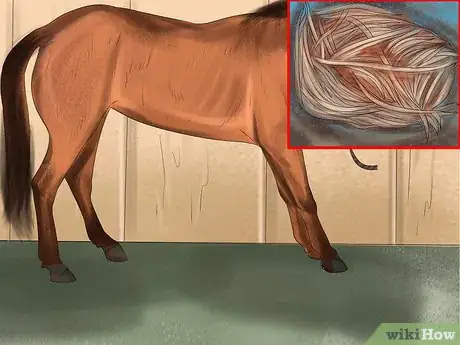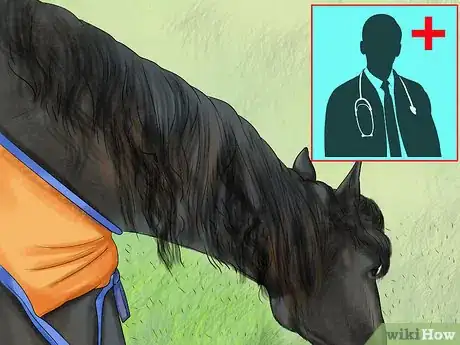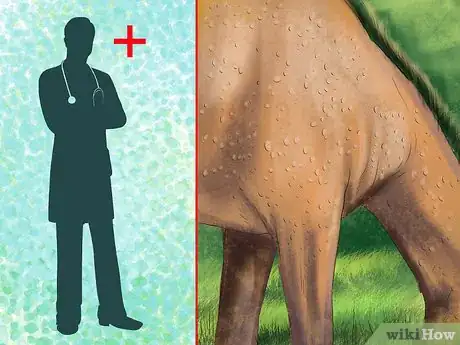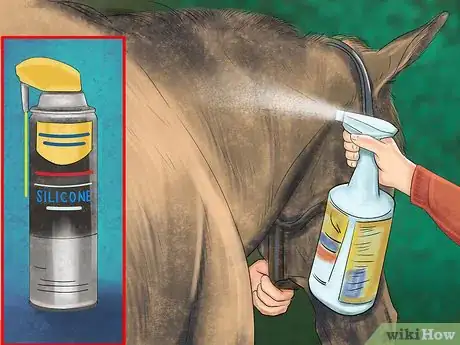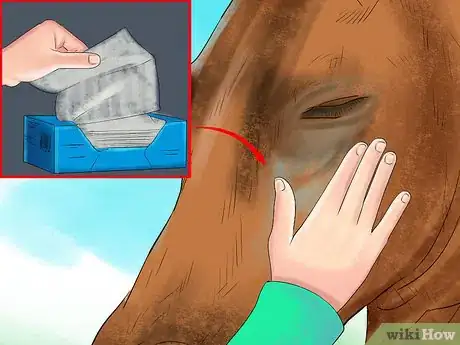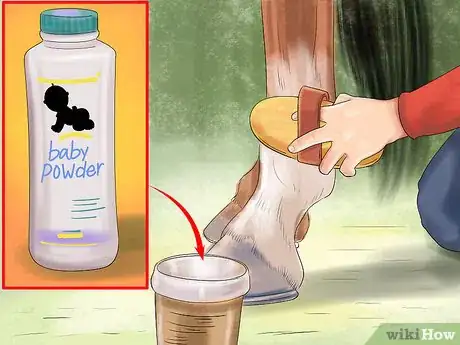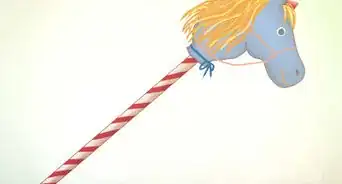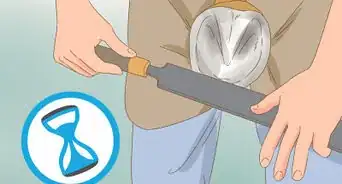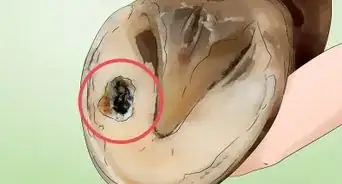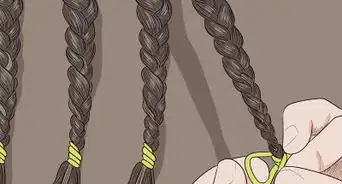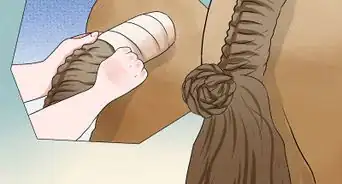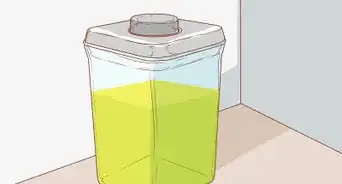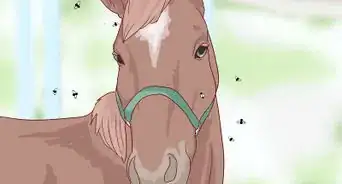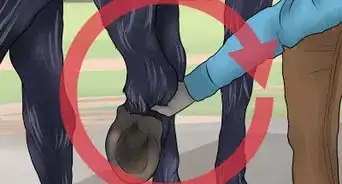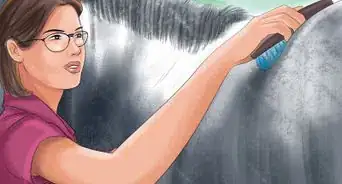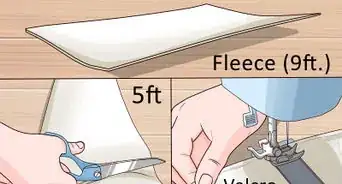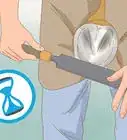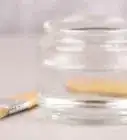This article was co-authored by Pippa Elliott, MRCVS. Dr. Elliott, BVMS, MRCVS is a veterinarian with over 30 years of experience in veterinary surgery and companion animal practice. She graduated from the University of Glasgow in 1987 with a degree in veterinary medicine and surgery. She has worked at the same animal clinic in her hometown for over 20 years.
There are 10 references cited in this article, which can be found at the bottom of the page.
This article has been viewed 86,519 times.
A shiny coat is the sign of a healthy and happy horse. Dull horse coats can result from nutritional deficiencies in your horse's diet, from worms and parasites, and from a lack of regular grooming. Whether you have a show to prepare for or you just want your horse to have a healthy, beautiful coat every day, this can be assured with care and attention to your horse’s needs.
Steps
Washing and Grooming Your Horse
-
1Use clean tools. Before washing your horse, soak all brushes (including mane and tail brushes and combs) in warm water with a small amount of dishwashing detergent. Rinse well and let dry in the sun.[1]
-
2Groom your horse regularly. Salt from sweat may dull the coat's color and irritate skin if the horse is not groomed properly.[2] Brushing your horse removes dry skin and dead hairs while distributing oils throughout the coat.[3]
- Use some elbow grease. Nothing replaces hard work. When you consistently care for your horse and tend to regular care, it shows.[4]
Advertisement -
3Keep baths to a minimum. Frequent soapy baths can leave the coat dry and dull and strip the natural oils.[5] While there's no "rule" to bathing frequency, know that a rinse can be useful for washing off sweat or dirt. Consider a bath before a show or if your horse is covered in mud.
- Monitor dandruff as one way to gauge an appropriate bathing schedule. Dandruff can be an indicator that you are bathing your horse either too frequently or not frequently enough. Without frequent and thorough bathing, horses commonly develop dandruff buildup. Excessive bathing can strip the natural oils of the coat and also lead to dandruff. [6]
-
4Rinse the coat thoroughly. When bathing your horse, rinse as many times as necessary until no soap runs off, as soap residue can lead to a dull coat. Any residue can affect the horse's skin or damage the naturally occurring oils.[7]
Addressing Adequate Nutrition
-
1Ensure that your horse eats a balanced diet. Good nutrition includes adequate protein and fatty acids, depending on your horse's activity level and medical needs. Grazing horses need appropriate nutrition as well. Talk to your equine nutritionist to provide you with professional advice.[8]
-
2Add supplements to your horse's diet. Supplementing can be a great way to add additional nutrition to your horse's diet when used as directed. Discuss any deficiencies with your veterinarian and create a supplement plan. Common ingredients in skin supplements include Vitamin A, B vitamins, Biotin, Methionine, Lysine, Zinc, Fatty acids, Vitamin E.[9]
-
3Add oils to your horse’s diet. A dull coat can stem from a deficiency in fatty acids such as Omega-3 and Omega-6 in your horse’s diet. Many people choose to add regular vegetable oil to the horse's diet. [10] Use as directed.
Assessing Your Horse's Health
-
1Determine whether your horse needs worming. Worms can cause your horse to experience rough and dull coat, lethargy, extended belly, and slowed growth in young horses.[11] Pay attention to any of these symptoms and talk to your veterinarian to ward off parasites.
- Monitoring parasite eggs in the fecal count is the best way to detect parasites and worms. Your veterinarian can help you develop an effective deworming program to fit your horse's needs.[12]
- Grazing horses experience less parasites than stabled horses due to less confined conditions. If you stable your horse, make sure clean conditions are maintained.[13]
-
2Assess for an underlying health condition. If your horse's coat condition has changed, it may be due to problems with health that may require medical attention from your veterinarian.
- A fungus infection may contribute to shedding matted or clumped hair. Some common symptoms of a fungus infection include weight loss, colic, diarrhea, and nasal drip.[14]
- Some glandular conditions can cause the skin to become dry, resulting in a dull, brittle hair coat. Discuss any concerns you have with your veterinarian.[15]
-
3Address allergies. Allergies are unpleasant for the horse and can contribute to problems with the horse's coat. Talk to your veterinarian about ways to treat your horse's allergies.[16]
Showing Your Horse
-
1Apply silicon after bathing. Silicon enhances the look of the horse's coat. Carefully spray silicon everywhere except the saddle area. Coating the legs and tail will ensure that dirt will not stick.[17] Additional products exist to enhance a coat's shine.
-
2Use a dryer sheet to collect dust. A dryer sheet will collect any last-minute dust around the face. Carefully brush the dryer sheet throughout the face with your hand, being careful to not displace any hair. Do this right before entering the warm-up ring.[18]
-
3Apply baby powder or corn starch to the legs. Adding powder to the legs will help the legs stand out and can improve the overall appearance of the horse. Apply powder on show day.[19]
Warnings
- Use supplements as directed and do not overfeed supplements containing iodine or selenium as these can be toxic at high doses.⧼thumbs_response⧽
- Do not apply shine products near the saddle area or around reins as this causes them to become slippery.⧼thumbs_response⧽
- To avoid burning your horse, abstain from using oils near the eyes or muzzle on sunny days.⧼thumbs_response⧽
References
- ↑ http://www.horsechannel.com/horse-showing/grooming-tips-for-show-ring-shine.aspx
- ↑ http://equimed.com/health-centers/general-care/articles/your-horses-coat-tells-tales
- ↑ http://www.drsfostersmith.com/pic/article.cfm?aid=1600
- ↑ http://www.equestrianlife.com.au/articles/How-To-Get-Your-Horses-Coat-Show-Ready-with-Tip-Top-Showing
- ↑ http://www.equestrianlife.com.au/articles/How-To-Get-Your-Horses-Coat-Show-Ready-with-Tip-Top-Showing
- ↑ http://www.horsechannel.com/horse-health/what-your-horses-coat-says-about-his-health.aspx
- ↑ http://www.horsechannel.com/horse-showing/grooming-tips-for-show-ring-shine.aspx
- ↑ http://equimed.com/health-centers/general-care/articles/your-horses-coat-tells-tales
- ↑ http://www.drsfostersmith.com/pic/article.cfm?aid=1600
- ↑ http://www.thehorse.com/articles/33706/adding-oil-to-a-horses-diet
- ↑ http://www.aaep.org/info/horse-health?publication=876
- ↑ http://www.horsechannel.com/horse-health/new-thinking-on-deworming.aspx
- ↑ http://www.aaep.org/info/horse-health?publication=876
- ↑ https://www.dvm360.com/view/causes-incidence-treatment-pulmonary-and-systemic-fungal-infections-horses
- ↑ http://equimed.com/health-centers/general-care/articles/your-horses-coat-tells-tales
- ↑ http://www.drsfostersmith.com/pic/article.cfm?aid=1600
- ↑ http://www.horsechannel.com/horse-showing/grooming-tips-for-show-ring-shine.aspx
- ↑ http://www.horsechannel.com/horse-showing/grooming-tips-for-show-ring-shine.aspx
- ↑ http://www.horsechannel.com/horse-showing/grooming-tips-for-show-ring-shine.aspx
About This Article
To make your horse's coat shine, start by cleaning all of your grooming brushes and combs with warm, soapy water and letting them dry in the sun. Next, come up with a regular grooming schedule to thoroughly brush out your horse's coat. Regular brushing removes dirt, debris, and dandruff, keeping your horse's coat looking its best. Avoid giving your horse frequent baths, since this can strip oil from the hair and cause the coat to look dull.. Also, make sure your horse eats a balanced diet with plenty of protein and fatty acids, and consider giving it supplements to address any nutrients it may not be getting from food. For tips on grooming your horse right before a show, read on!

